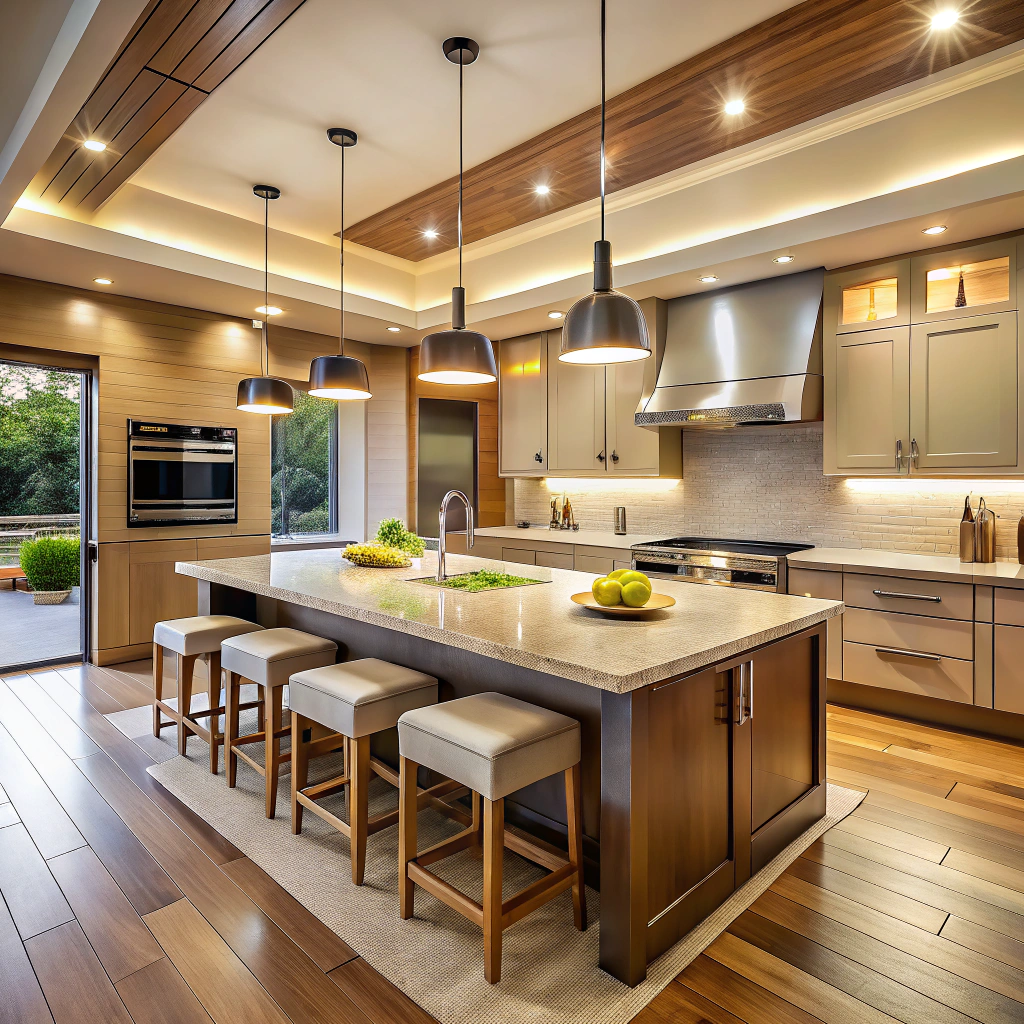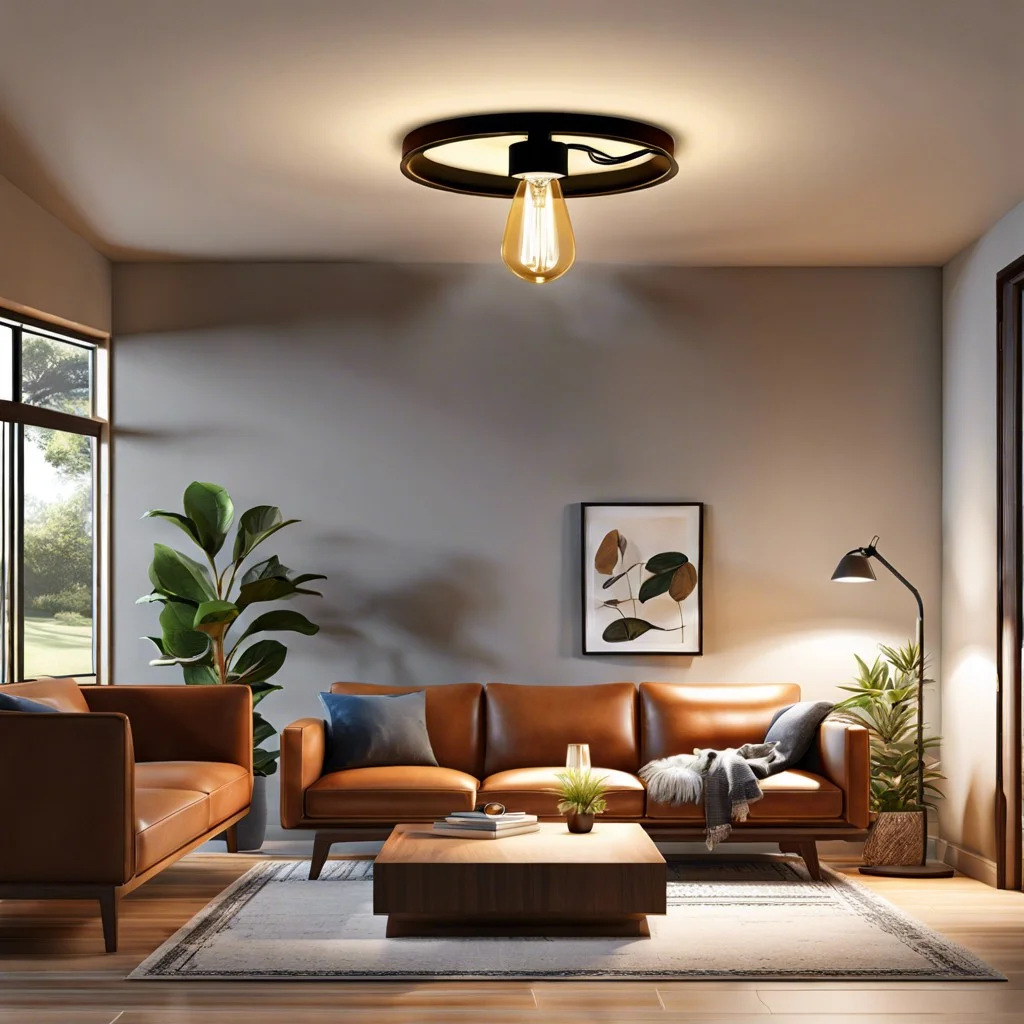Last updated on
Discover the key differences between island pendant lighting and island linear lighting. Make an informed decision for your kitchen’s illumination needs.
Are you in the middle of designing your dream kitchen and can’t decide what type of lighting to install over your island? Look no further!
Island pendant lighting and island linear lighting are two popular options that can add both style and functionality to your kitchen. But which one is right for you? In this article, we’ll explore the differences between island pendant lighting and island linear lighting, so you can make an informed decision that suits your personal taste and needs.
So, grab a cup of coffee, sit back, and let’s shed some light on this topic!
What's Inside
Island Pendant Lighting

Island pendant lighting is a popular choice for homeowners who want to add a touch of elegance and sophistication to their kitchen. These lights hang from the ceiling and come in various shapes, sizes, and styles.
Pendant lights can be used as task lighting or ambient lighting depending on the height at which they are hung.
One of the benefits of island pendant lighting is that it adds visual interest to your kitchen design while providing ample illumination over your island workspace. Pendant lights also come in different materials such as glass, metal or fabric shades which allow you to choose one that complements your decor style.
When selecting an island pendant light consider its size relative to the space available above your countertop; too small will look out-of-place while too large may overpower other elements in the room. Ensure that it provides enough light for cooking tasks without casting shadows on work surfaces.
Island Linear Lighting

Unlike pendant lighting, which hangs down from the ceiling in one or more fixtures, linear lighting runs parallel to the island’s length and provides even illumination across its surface. This type of lighting is perfect for those who prefer clean lines and minimalistic design aesthetics.
One advantage of island linear lighting over pendant lights is that it distributes light evenly across the entire countertop area without creating any shadows or dark spots. It also allows you to adjust brightness levels according to your needs by installing dimmer switches.
However, before opting for this type of fixture, consider whether it will fit within your space requirements as they tend to be longer than traditional pendants. Installation may require professional assistance due to their size and complexity compared with other types of kitchen lights.
Design Aesthetics

Island pendant lighting is an excellent choice if you want to add a touch of elegance and sophistication to your kitchen. Pendant lights come in various shapes, sizes, and styles that can complement any decor style from modern minimalism to rustic charm.
On the other hand, island linear lighting offers a sleeker look with its clean lines and minimalist design. Linear lights are ideal for contemporary kitchens where simplicity is key.
Ultimately, choosing between island pendant or linear lighting depends on your personal taste and overall kitchen design aesthetic.
Light Distribution
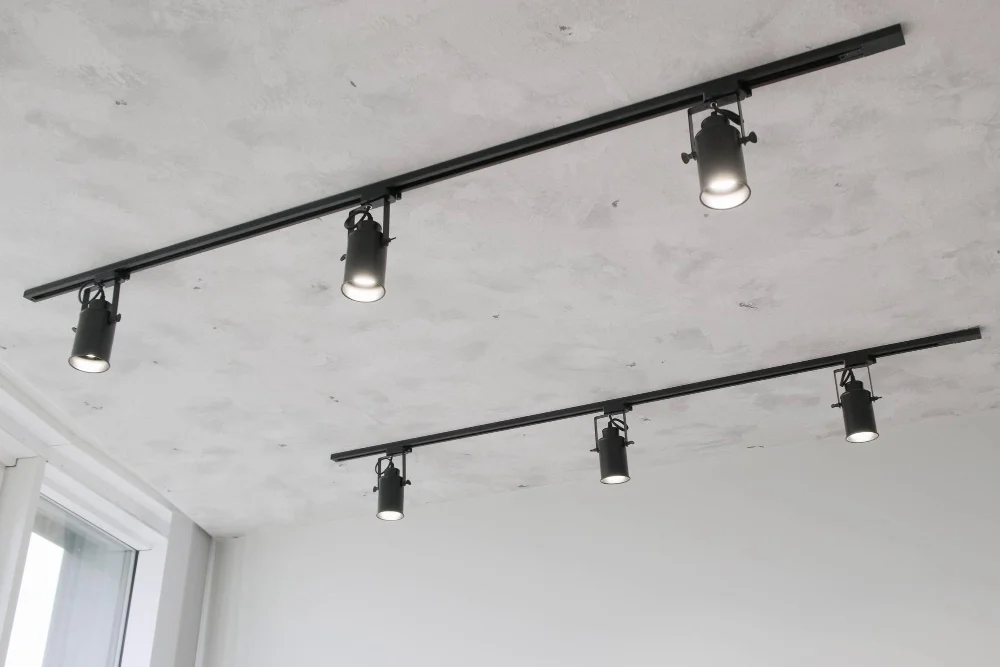
Pendant lights are designed to provide focused illumination directly below them, making them ideal for task-oriented activities such as food preparation or cooking. On the other hand, linear lights distribute light evenly across a broader area, providing more ambient light that can illuminate the entire kitchen.
If you have a large kitchen with multiple workstations or frequently host gatherings in your home’s heart (the kitchen), then installing an island linear light may be the best option for you. It will ensure that every corner of your space is well-lit while creating a warm and inviting atmosphere.
However, if you prefer concentrated illumination over specific areas like islands or countertops where most of your meal prep takes place – then go for pendant lights! They offer targeted brightness without overwhelming surrounding spaces with too much glare.
Installation Process
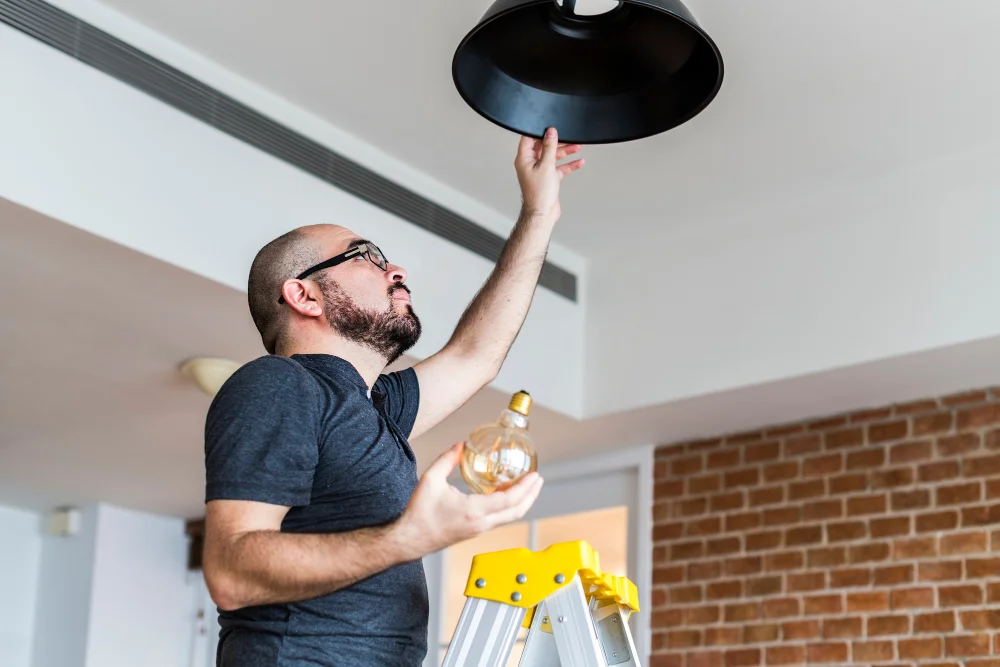
The good news is that both island pendant and linear lighting are relatively easy to install, especially if you have some basic electrical knowledge.
Island pendant lights typically require a single junction box above the island where they will be installed. Once this is in place, all that’s left to do is attach each light fixture using its own mounting hardware and wiring them into the junction box.
On the other hand, installing an island linear light requires more planning as it needs a longer space for mounting compared to individual pendants. It also requires multiple junction boxes along with additional support brackets for stability purposes.
Space Requirements
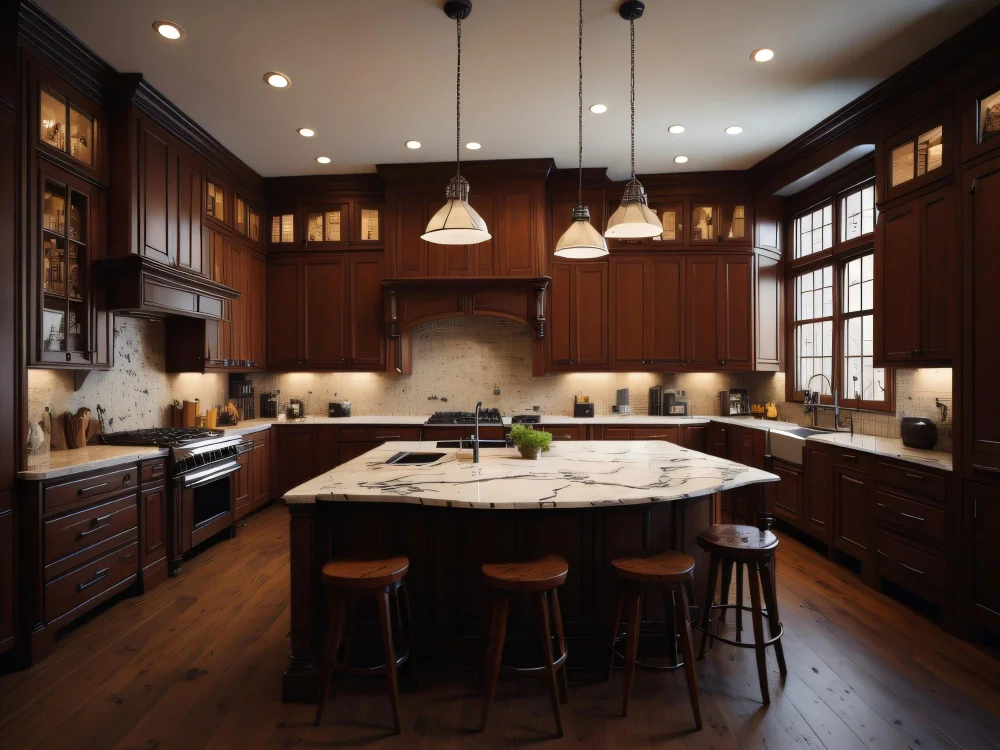
Island pendant lights typically hang down from the ceiling and take up vertical space, while linear lights run parallel to the surface of your kitchen island.
If you have a low ceiling or limited overhead clearance, then an island linear light may be a better option for you. On the other hand, if you have high ceilings or want to create a dramatic focal point in your kitchen design, then an island pendant light can add visual interest without taking up valuable counter space.
It’s also essential to consider how much room is available on either side of your kitchen island when deciding which type of lighting fixture will work best for your needs.
If there isn’t enough clearance around the perimeter of your countertop area due to cabinets or appliances being too close by – then opting for slimline fixtures like LED strip lights might be more appropriate than bulky pendants that could obstruct movement in this area.
Energy Efficiency

Island linear lighting tends to be more energy-efficient than pendant lights because they use LED bulbs that consume less electricity and have a longer lifespan. This means you’ll save money on your electricity bill in the long run while also reducing your carbon footprint.
However, if you prefer pendant lights over linear ones, there are still ways to make them more energy-efficient. For example, choose LED bulbs instead of traditional incandescent ones and opt for dimmer switches so that you can adjust the brightness according to your needs.
When deciding between island pendant lighting and island linear lighting for your kitchen’s illumination needs, don’t forget about their respective levels of energy efficiency. By making an informed decision based on both style and functionality factors like this one will help ensure that you create a space where form meets function seamlessly!

